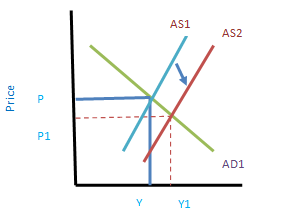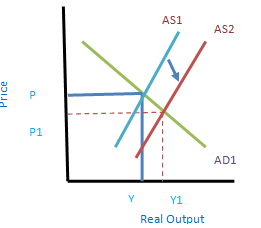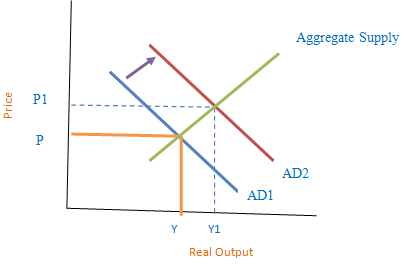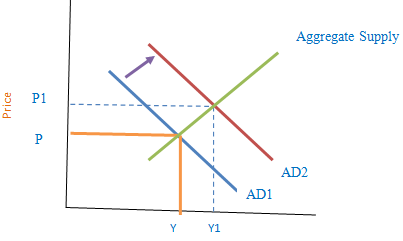Key Macroeconomic Issues faced by Singapore Government
Discuss about the Singapore Productivity Growth Sluggish.
This essay outlines the different macroeconomic events that are impacting and generating challenges for Singapore’s economy. With regard to this, slow global growth, aging population and looming US rate hike have impact on the economy. The essay comes as the restructuring agenda in Singapore’s economy. Furthermore, this essay presents the macroeconomic issues such as long-term GDP growth rate, short-term recession, labour productivity and high valued servicing in the economy. These generating issues in Singapore’s economy have influence on the import and export of the nation. The reasons of these problems are volatile stock market, slump in construction, Brexit, US election, high operating and wages costs that are negatively influencing the economy. As a result of these problems, the society is influenced as well as economy of the nation. Therefore, the government of the country is implementing various policies to enhance the investment and to improve the productivity. Additionally, this essay describes the failure of the restructuring drive to lift productivity growth has to do with implementation. The take-up of various schemes to help firms improve productivity has not been widespread.
Key Macroeconomic Issues faced by Singapore Government
Different macroeconomic issues that are faced by Singapore government and affected to the economy are discussed as below:
The growth of rate of Singapore in recent years is not optimizing for the wealth of economy in past years. The obtained data shows that GDP growth rate of the economy is fluctuated and it is decreased from January 2016 and attributed -2% in October 2016 (Trading Economics, 2016). Therefore, the decreasing GDP growth rate is an issue for long term growth rate. It is because the fluctuated and decreasing GDP has a negative impact on an economy’s development. These figures indicates that the decreasing GDP growth rate have impacted to the economic development and influenced to the business cycle and new investments in the country.
Short-term recession:
At present time, the Singapore’s economy is facing short-term recession as a weak economy from near to empty malls during the weekday and it is hard for the workers to get their choice job. Due to Brexit fear and the uncertainty over the US presidential elections, is facing Short term global demand. For short-term there is no sign of a strong economic growth (Low, 2016). As per most recent it is found out that the manufacturing of the country dipped with 1.1 percent on a year basis due to weak global demand of oil, electronic and key export goods for Singapore. In October 2016, the export of Singapore is declined 12 percent due to the fear of US elections. Data presents that the continued slack in export and the US election pushed Singapore’s economy into a short-term recession (Jacob, 2016).
Impacts of the Problem on Society
Labour productivity:
Labour productivity remains a major issue in Singapore. In order to attractiveness of employment opportunities and investment infrastructure, a large number of foreigners came in Singapore. Even though the total fertility rate of economy was decreasing, the population size was increased from 4 million in 2000 to 5.3 million in 2013. It contributed to the lesser productivity because the labour was unskilled which reduced their productivity. Additionally, lower productivity sectors were hiring more employees which also contributed to decreased productivity of the country (Koh, 2015).
High valued servicing nation:
In Singapore, the strategy of accumulation high valued service is a workable plan which applies on both service and manufacturing in coming decade. But in recent years it is observed that the dipping manufacturing and short-term recession have influenced the economy’s high valued services. Over last two decades the manufacturing wages raised with 6 percent and servicing with 5 percent, but the decreased growth rate and manufacturing generated the issue of decreasing high valued servicing for the economy (BMI Research, 2011).
Causes of the problem
In Singapore, the problem of recession was caused by the combination of internal and external factors. In this way, the slow industrialization growth and decreased demand of exporting goods and services in developing countries are the main cause of recession. Further, the poor performance of oil refining and shipbuilding due to new competitors has created the problem for Singapore’s economy. Internally, the operating costs, wages and rentals are going high in the country which made less competitive Singapore’s economy in the global market as the declined productivity. Slump in construction, high domestic saving rates and inflexibility in the economy damaged the Singapore’s economy (Singapore Government, 2016). Moreover, the plunging oil prices and volatile stock market also created the problem in Singapore’s economy. Therefore, the volatility is a cause of problems for the society and economy that has impacted to consumer spending. However, the rapid structural and technological changes in the country are cause of unemployment in spite of economic growth. The technological and structural improvement increased the output in less time. Therefore, it is observed that the structural improvement is also a cause of the above problems (Monetary Authority of Singapore, 2016).
The slow growth rate and recession have a great impact on society and economy. They may be the cause of increasing unemployment in the society. In low economic growth rate, the demand of goods remains less and the firms produce less. Due to less production there will be less demand of workers and will increase the unemployment rate. At the time of recession in Singapore, the companies have declined workers because in uncertain and negative growth they obtained higher growth rate. Furthermore, in declining economy the companies try to decrease the cost by keeping low wages. At the time of global recession in Singapore the due to low wage the living standard of people decreased and the cost of living increased. As a result of recession and business cycle the firms make less profit therefore the government make lower corporation tax and the workers received lower income (Sobotka et al, 2011). Additionally, the slow growth rate leads to poorer investment and damaged the long-term productivity competency of the economy. In this order, the fiscal deficit in the country increased and the value of currency decreased in global market. Therefore, it is observed that these problems are bad for the development of society and economy. In these problems, the investors hesitate to make new investment, and manufacturers are powerless to churn out products.
Implemented Policies by the Government to Solve the Problems
Singapore’s economy faces various kind of problem related to slow economic growth, ageing population and looming US rate hike. In regarding of this, it is observed that over the past decades the government has implemented different strategic economic plans and policies to reshape the nation’s economy. The latest strategic plan has been based on 2010 economic strategies committee report to strengthen the economy (Leong, 2015). The Singapore government implemented different kind of policies to restructure the economy and to solve the problems such as aggregate labor hours, labor productivity, demand side policies or fiscal policy and supply side policies or monetary policy. According to the Nomura global markets research analysis, Singapore economy was leading to less than stellar productivity growth. The policies implemented by government can be discussed as below-
Increase Aggregate Labor Hours:
To solve the problem related the productivity; Singapore government implemented the policies related to the aggregate labor hours. Aggregate labor hours policy is helpful to measure efforts of labor that was contributed in the country’s GDP. The policy indicates the exact number of working hours recorded in a particular year and it is a better measure of employment as against the unemployment rate. Government implemented this policy to arise the productivity growth to 2 to 3 percent, but the there is failure of restructuring drive to increase the productivity growth (Leong, 2015).
Moreover, this policy leads to increase the labor hours by providing in house and external training by WSD approved training organization. Singapore government motivates the employees by organizing Workshops, Career fairs and other events (Ministr of Manpower, 2016). At this situation, the problem related debt-servicing as house hold and corporate debt level is relatively high. This policy of aggregate labor hour has not been widespread to help firms for improving productivity. The impact on aggregate supply or demand by increasing aggregate labor hours can be drawn as under

Firstly, Singapore government implements the policy to increase the labor hours. Mainly this policy is aimed to supply more products in the country to increase the GDP. When government increase the aggregate labor hours than supply curve shift from AS1 to AS2. It means price of the products will decrease and supply quantity will be increased. In short run, supply curve can be shift to the right, which means decrease in wages, advancement in technology and increase in physical capital stock. Due to this, inflation rate of the Singapore economy may decrease because the prices of the products will be going downward.
Labor productivity means the real economic output per labor hour. There is direct relation between the productivity of the country and the growth of the country. Due to attractiveness of the infrastructure and employment opportunity in Singapore, it flooded with large number of foreigners. Even though the total fertility rate of economy was decreasing, the population size was increased from 4 million in 2000 to 5.3 million in 2013 (Chiarini et al., 2012).
It contributed to the lesser productivity because the labour was unskilled which reduced their productivity. On the other hand, to increase the labor productivity Singapore government links with government agencies and ministries. With the help of SSG and WDA, government serves jobs to the seeker and provides training to develop their capabilities and knowledge (MINEDUC, 2016). This will help the Singaporeans for core and promote the development and competitiveness and workforce.
Additionally, lower productivity sectors were hiring more employees which also contributed to decreased productivity of the country. In this way, the government of the country implemented the “transition support package” such as wage credit scheme, PIC bonus and income tax rebate to adjust the rising costs and to increase the labour productivity (Ning, 2015). To measure the impact of increase labor productivity can be drawn as under

Figure 2: AS-AD of Increase Labor Productivity
Increasing in the labor hour is causes for increase in labor productivity. By which, supply curve has been shifted to the right side. The policy also leads to increase the quantity from Q to Q1. It will raise the national income because of increase the demand of the products. Singapore government mainly focuses on the global growth (Shepherd and Haddad, 2011). Therefore, government invests in the productivity enhancing schemes to increase the growth of the economy.
Mainly the Singapore government used demand side and fiscal policies to promote the economic growth because the Singapore economy faces the issue of stagflation. To reduce the problems faced by Singapore economy, government involves in the spending programs. In addition to this, fiscal policies stimulate the demand of the country and enhancing the growth of the economy (Tucker, 2013). To resolve the problem of productivity in Singapore, government can impose additional taxes as well as government can invest their money in some benefited projects. By this, employment will be generated and government mainly focuses on the critical building infrastructure, tunnels and many more. In this way, the government used prudent fiscal policy to enjoy consistent budget surpluses over the years which contributes a high saving rate to achieve highest investment rates in the world without having to incur foreign debt (MAS, 2016).
Moreover, due to investment projects it will help to increase the disposable income and consumption people. With the implementation of fiscal policy, effect on the aggregate demand and supply can be determine with the help of below curve-ut

Figure 3: AS-AD of Demand Side Policy
The above policy leads to use the revenues from taxes and also manage the expenditure that influences economy. The Singapore government spends money to assure the nation for a secure future. In addition to this, fiscal policy helps for the economic growth as well as for reducing the unemployment rate. When government invests in the different project, employment rate will be increase (Afonso and Vasconcelos, 2015). Due to this, people receive jobs and want to increase their standard of living. Therefore, demand of the product and service will be increased. In the above graph demand curve can be shifted from AD1 to AD2 because of the high income and price of the product and service will increase from P to P1.
Monetary policy is a mechanism which is used to control the inflation and maintain price stability in the economy. In Singapore, there is a situation of stagflation in which inflation is high, economic growth is slow and the rate of unemployment is relatively high. Therefore, Singapore government is applying the monetary policies to reduce the problems regarding economic growth and low productivity (Soon and Hoe, 2015). The government implemented this policy with the aim to increase the aggregate supply which will support to the corporate sector and the employment in the economy. In addition to this, to increase the supply of money in the economy at the time of recession in Singapore, government ties up with the central banks and ministries. Therefore, government will increase supply of money to reduce the unemployment (Singapore Government, 2016).
The aim of supply side policies is to increase the production capacity of the Singapore economy. With the help of supply side and monetary policies government try to maintain the income tax and other basic tax rates to increase the level of personal allowances (Boland, 2014). MAS banking system liquidity framework provides the facilities which comprise the money market operations and liquidity facilities. MAS do not target the domestic interest rates of the country but they target the foreign exchange rate to increase the supply of money. They aim to ensure the appropriate amount of liquidity in the banking system of Singapore (MAS, 2013). Below curve indicate change in aggregate demand and aggregate supply by the implementation of supply side and monetary policies.

Figure 4: AS-AD of Supply Side Policy
From the above curve, it can be identified that government start printing additional currency to reduce the problems of Singapore economy. Due to which aggregate demand curve shift to right and peoples were easily afford necessary products, which they want. The policy leads to make the Singapore exports more affordable, attractive. On the other hand, monetary policy creates modest inflation in the country (Frenkel and Johnson, 2013). The above diagram indicates that increase in the demand can lead to increase the GDP of Singapore economy. On the other hand, with the supply of money demand of the people can be shifted in the diagram from AD1 to AD2 and price level is increase from P to P1. Increase in the price denotes a inflation in the Singapore economy.
It is expected that the global economic uncertainty will remain until the end of the decade. Therefore, Singapore government is continuing to develop the external environment through international trade agreements and making efforts to help the organizations to overcome the financial challenges (Weilun, 2016). Furthermore, as a key aspect the deep and liquid capital market of Singapore is a financial centre which supports to the economic growth of the nation. The extensive range of both government securities and foreign corporate bonds, Singapore offers a wide range of investment opportunities to support the nation’s economy (Singapore government, 2016). Additionally,the government should implement on continue basis fiscal and monetary policies to promote economic growth and control for the inflation in economy.
Conclusion
The Singapore’s economy has been experiencing short-term recession as a main factor that are influencing the growth rate of the economy. The performance of Singapore economy is fluctuating over the past few years that influence the overall manufacturing sector and government restructuring agendas. It is an important macroeconomic issue on which the long term growth of the country is depended.
Furthermore, the action of increasing labour productivity is appropriate policy of the government in direction of economic growth. The GDP of the can be increase significantly through the contribution of increased labour hour the economy will be able to increase the productivity. The increased labour productivity will be beneficial for the growth of economy in a significant way. In order to improve the Singapore’s economy and boost the growth the government ensures the labour hour hours and further increase in the wages of the workers. This government implementation is capable for structural reform and makes able the economy to achieve better economic situation that will be turn in boost growth. In this concern, the government implemented “transition support package” which includes wages, credit scheme, PIC bonus and income tax rebate scheme for the adjustment of raised cost labour productivity. Labour productivity policy is a beneficial policy for both society and economy because it increases the skills and wealth of the nation. Therefore the government should invest in productivity enhancing schemes for the long term economic growth.
Reference
Afonso, O. and Vasconcelos, P. B. (2015) Computational Economics: A Concise Introduction. USA: Routledge.
BMI Reaserch (2011) High Value-Added Industries To Drive Growth. [Online]. Available at: https://www.bmiresearch.com/articles/high-value-added-industries-to-drive-growth (Accessed: 21 December 2016).
Boland, L. A. (2014) The Methodology of Economic Model Building (Routledge Revivals): Methodology After Samuelson. USA: Routledge.
Chiarini, B., Malanima, P. and Piga, G. (2012) From Malthus' Stagnation to Sustained Growth: Social, Demographic and Economic Factors. UK: Springer.
Frenkel, J. A., and Johnson, H. G. (2013) The Monetary Approach to the Balance of Payments. USA: Routledge.
Jacob, J. (2016) Is Singapore heading to full-blown recession in 2017? [Online]. Available at: https://www.ibtimes.sg/singapore-heading-full-blown-recession-2017-4762 (Accessed: 21 December 2016).
Koh, N. (2015) Higher productivity, the only option left for Singapore. [Online]. Available at: https://www.ipscommons.sg/higher-productivity-the-only-option-left-for-singapore/ (Accessed: 21 December 2016).
Leong, G. (2015) Singapore productivity growth sluggish: Nomura, University College Dubin, pp. 30-32.
Low, A. (2016) NO RECESSION YET, BUT HERE’S WHY SINGAPORE FACES BIGGER WORRIES AHEAD. [Online]. Available at: https://www.scmp.com/week-asia/business/article/2028084/no-recession-heres-why-singapore-faces-bigger-worries-ahead (Accessed: 21 December 2016).
MAS (2013) Implementation from Monetary Authority of Singapore, Monetary Policy Operations in Singapore, pp. 8-10.
MAS (2016) Fiscal Policy. [Online]. Available at: https://www.sgs.gov.sg/The-SGS-Market/Fiscal-Policy.aspx (Accessed: 28 December 2016).
MINEDUC (2016) WDA. [Online]. Available at: https://www.mineduc.gov.rw/agencies/wda/ (Accessed: 23 December 2016).
Ministr of Manpower (2016) Hours of work, overtime and rest days. [Online]. Available at: https://www.mom.gov.sg/employment-practices/hours-of-work-overtime-and-rest-days (Accessed: 23 December 2016).
Monetary Authority of Singapore (2016) Monetary Policy and Economics. [Online]. Available at: https://www.mas.gov.sg/Monetary-Policy-and-Economics.aspx (Accessed: 23 December 2016).
Ning, T. S. (2015) Singapore Budget 2015: Key policy measures. [Online]. Available at: https://www.businesstimes.com.sg/government-economy/singapore-budget-2015/singapore-budget-2015-key-policy-measures (Accessed: 10 December 2016).
Shepherd, B. and Haddad, M. (2011) Managing Openness: Trade and Outward-oriented Growth After the Crisis Trade and Development Series. Washington: World Bank Publications.
Singapore Government (2016) Monetary Authority of Singapore. [Online]. Available at: https://www.mas.gov.sg/Singapore-Financial-Centre/Overview/Capital-Markets.aspx (Accessed: 24 December 2016).
Singapore Government (2016) Singapore experiences its first post-independence. [Online]. Available at: https://eresources.nlb.gov.sg/history/events/9f9489cf-5432-4797-bf66-fd1b3bab7a2b (Accessed: 12 December 2016).
Sobotka, T., Skirbekk, V., and Philipov, D. (2011) Economic recession and fertility in the developed world. Population and development review, 37(2), pp. 267-306.
Soon, C. and Hoe, S. (2015) Singapore Perspectives 2015: Choices. Singapore: World Scientific.
Trading Economics (2016) Singapore GDP Growth Rate. [Online]. Available at: https://www.tradingeconomics.com/singapore/gdp-growth (Accessed: 21 December 2016).
Tucker, B.I. (2013) Macroeconomics for Today. Singapore: Cengage Learning.
WDA (2016) Background. [Online]. Available at: https://www.wda.gov.rw/en/about_us (Accessed: 23 December 2016).
Weilun, S. (2016) Global economic uncertainty to last for next 3-5 years: Hng Kiang. [Online]. Available at: https://www.iesingapore.gov.sg/Media-Centre/News/2016/4/Global-economic-uncertainty-to-last-for-next-3-5-years--Hng-Kiang (Accessed: 24 December 2016).
To export a reference to this article please select a referencing stye below:
My Assignment Help. (2018). Singapore Productivity Growth Sluggish: Macroeconomic Issues, Causes, Impacts, And Implemented Policies. Retrieved from https://myassignmenthelp.com/free-samples/singapore-productivity-growth-sluggish.
"Singapore Productivity Growth Sluggish: Macroeconomic Issues, Causes, Impacts, And Implemented Policies." My Assignment Help, 2018, https://myassignmenthelp.com/free-samples/singapore-productivity-growth-sluggish.
My Assignment Help (2018) Singapore Productivity Growth Sluggish: Macroeconomic Issues, Causes, Impacts, And Implemented Policies [Online]. Available from: https://myassignmenthelp.com/free-samples/singapore-productivity-growth-sluggish
[Accessed 30 May 2025].
My Assignment Help. 'Singapore Productivity Growth Sluggish: Macroeconomic Issues, Causes, Impacts, And Implemented Policies' (My Assignment Help, 2018) <https://myassignmenthelp.com/free-samples/singapore-productivity-growth-sluggish> accessed 30 May 2025.
My Assignment Help. Singapore Productivity Growth Sluggish: Macroeconomic Issues, Causes, Impacts, And Implemented Policies [Internet]. My Assignment Help. 2018 [cited 30 May 2025]. Available from: https://myassignmenthelp.com/free-samples/singapore-productivity-growth-sluggish.
